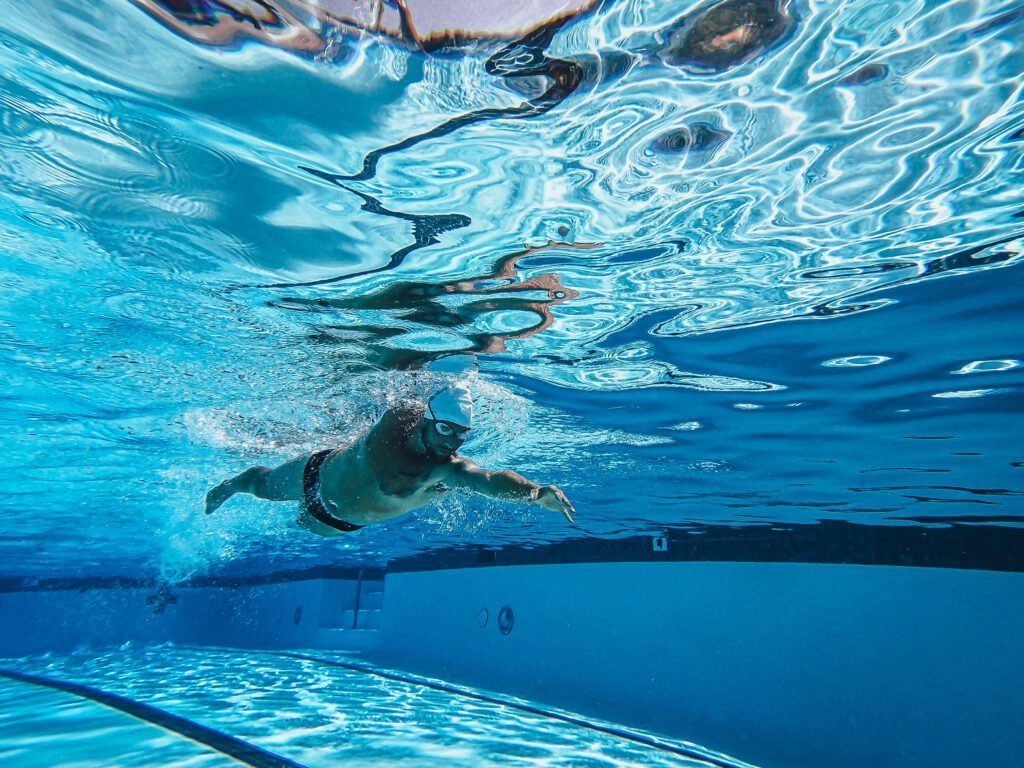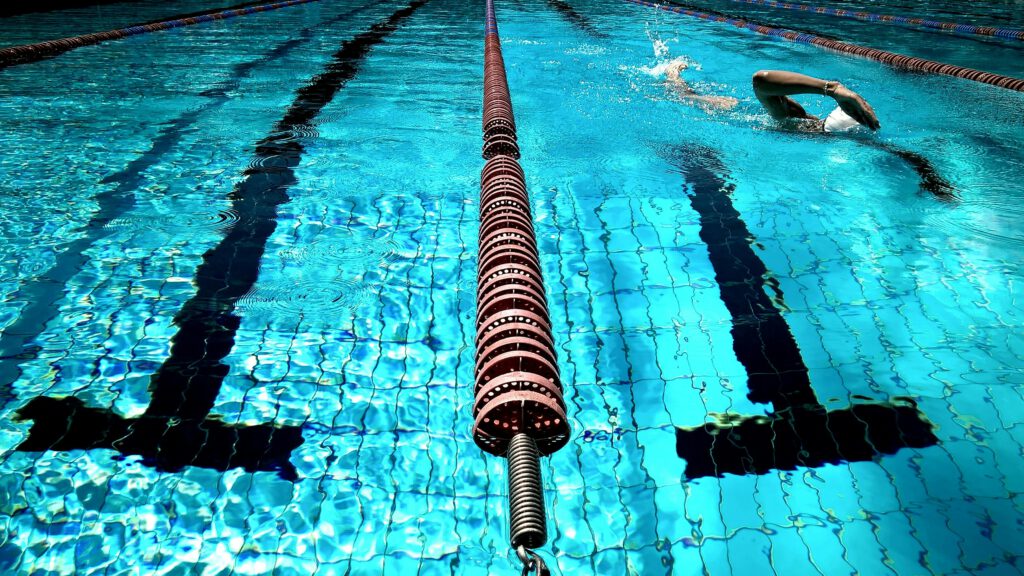
Top 3 Benefits Swimming Has On Your Health
Swimming is an effective activity for improving cardiovascular health. It offers many benefits that impact the heart and circulatory system. Here’s an explanation of how swimming improves cardiovascular health:

Swimming improves cardiovascular health
Swimming is an effective activity for improving cardiovascular health. It offers many benefits that impact the heart and circulatory system. Here’s an explanation of how swimming improves cardiovascular health:
- Aerobic exercise: Swimming is a form of aerobic exercise. It gets your heart rate up and increases your breathing rate. Aerobic exercise involves continuous, rhythmic movements. It requires oxygen to meet the energy demands of your body. By engaging in swimming, you can strengthen your heart muscle. This enhances its efficiency and improves cardiovascular fitness.
- Increased heart rate: Swimming elevates your heart rate. Making it work harder to pump blood throughout your body. Increasing workload strengthens the heart muscle over time. Leading to improved cardiac function and a more efficient circulation system. As your heart becomes stronger, it can pump a larger volume of blood with each beat. Resulting in a lower resting heart rate and better heart health.
- Improved lung capacity: Swimming involves controlled breathing techniques. Requiring you to coordinate your breathing with your swimming strokes. This practice helps expand your lung capacity. Improving the efficiency of your respiratory system. By taking in more oxygen during swimming sessions. Your body can deliver oxygen-rich blood to your muscles more. Enhancing cardiovascular performance.
To maximize the cardiovascular benefits of swimming. It’s recommended to engage in regular sessions of moderate to vigorous intensity swimming. Aim for at least 150 minutes of moderate-intensity aerobic activity. Or 75 minutes of vigorous-intensity activity. Spread throughout the week, as per the guidelines provided by health organizations. As with any exercise regimen, it’s important to start. Warm up before swimming, and listen to your body to prevent overexertion or injury.

Swimming improves muscle strength
Swimming is an effective activity for improving muscle strength throughout your body. It engages many muscle groups, providing a full-body workout. That can lead to significant gains in muscular strength. Here’s an explanation of how swimming helps improve muscle strength:
- Resistance training: Water provides natural resistance. Which makes your muscles work harder as you swim. Every movement against the water’s resistance engages your muscles. Resulting in improved strength and muscle tone. The resistance of water is greater than that of air. Making swimming a more challenging workout compared to exercises performed on land. This resistance training effect helps build and strengthen muscles throughout your body.
- Whole-body engagement: Swimming engages a wide range of muscles. Including those in your arms, legs, shoulders, back, core, and even your neck. Different swimming strokes, such as freestyle, backstroke, breaststroke, and butterfly. Target specific muscle groups, ensuring a comprehensive workout. By challenging these muscle groups during swimming. You can promote muscular growth and development, leading to increased strength over time.
- Core strength: Swimming activates your core muscles. Which are crucial for stability and strength. The constant movement and stabilization required to maintain proper body alignment. In the water engage your abdominal, back, and pelvic muscles. As you swim, these muscles contract and strengthen. Improving your core stability and enhancing your strength.
- Balanced muscle development: Swimming involves symmetrical movements. Requiring equal effort from both sides of your body. This helps promote balanced muscle development. Reducing the risk of muscular imbalances and related injuries. By strengthening muscles on both sides of your body. Swimming contributes to better posture, coordination, and physical performance.
To maximize muscle strength gains through swimming. It’s important to vary your strokes, intensities, and workout routines. Incorporate different swimming strokes and drills to target specific muscle groups. You can also use equipment like kickboards, pull buoys, and paddles. To add resistance and further challenge your muscles. Consistency and progressive overload, increase the intensity and duration of your swimming sessions. Are key to continued muscle strength improvement.
Remember to warm up before swimming and cool down afterward to prevent injuries. If you’re new to swimming or have specific fitness goals. Consulting with a swimming coach or instructor. Can help you design a personalized swimming program that suits your needs.

Swimming improves flexibility in joints
When it comes to flexibility in joints. Swimming can be particularly beneficial due to several reasons:
- Low-impact exercise: Swimming is a low-impact form of exercise. That reduces stress on your joints. Unlike high-impact activities such as running or jumping. The buoyancy of water supports your body weight. Reducing the strain on your joints while allowing you to move. This makes swimming an excellent option for individuals. With joint conditions or those recovering from injuries.
- Reduced pressure on joints: The weightlessness you experience. Swimming reduces the pressure and compression on your joints. This can be especially beneficial for individuals with conditions. Such as arthritis or joint pain. As it allows for increased joint mobility and decreases discomfort during exercise.
- Dynamic stretching: Swimming involves a variety of movements. Requiring your joints to move through a wide range of motion. The stretching and extension of your limbs, combined with the resistance of water. Ease dynamic stretching of the muscles and joints. This repetitive stretching helps improve joint flexibility over time.
It’s important to note that swimming can enhance joint flexibility. It’s crucial to warm up before swimming and maintain good technique. To prevent any strain or injury. If you have any pre-existing joint conditions or concerns. It’s advisable to consult with a healthcare professional. Or an experienced Swim Instructor. To ensure that swimming is suitable for your specific needs.
The benefits that swimming has on your health. This advice is based on my 15 years of experience as a Swim Instructor and 30 years as a Swimmer. If want to know more we can help. You can get advice from our experienced swim instructors who live in Toronto, Canada. All you have to do is join us – for free.






Responses